Located at the heart of Hanoi, Hanoi Opera House has long been known as a historical, cultural and also political relic of the city. Years go by, still, the building stands strongly and proudly representing the largest and the most outstanding theatre in Vietnam.

Source: Flickr – Edgardo W. Olivera
I. Brief information
- Location: 01 Trang Tien Street, Hoan Kiem District, Hanoi
- Constructed: 1901 – 1911
- Area: 2.600m2
- Price: Varies (300.000 – 1.000.000 VND/ ticket)
- Hours: Varies
Require a tour at Hanoi Opera House
II. History of Hanoi Opera House
Hanoi Opera House is a distinctive historical and cultural feature through the flow of the city’s history.
Back in 1989, the city council held a meeting under the presidency of the Ambassador of Hanoi – Mr. Richard proposed to construct the Theater. The building was designed by 2 architects Harlay and Broyer. It was started on June 7, 1901, under the supervisor of 1 of the 2 designers – Harlay and finished in 1911. The Opera House costs about 2 million Francs in overall.
Hanoi Opera House is the combination of the ancient Greek architecture of the Gothic with the Tuylory castle, modeled on Paris’s Opera Garnier. It also reflects the Mosaic style on the door domes and mirror room.
III. The function of Hanoi Opera House
At that time, the theater was mainly used to display classical art performances namely opera, chamber music, drama, etc. As Hanoi Opera House was believed to be too luxurious and extravagant to the Vietnamese’s lower class, it only served the high-class French officials, elites and few wealthy Vietnamese who can afford the expensive fares.
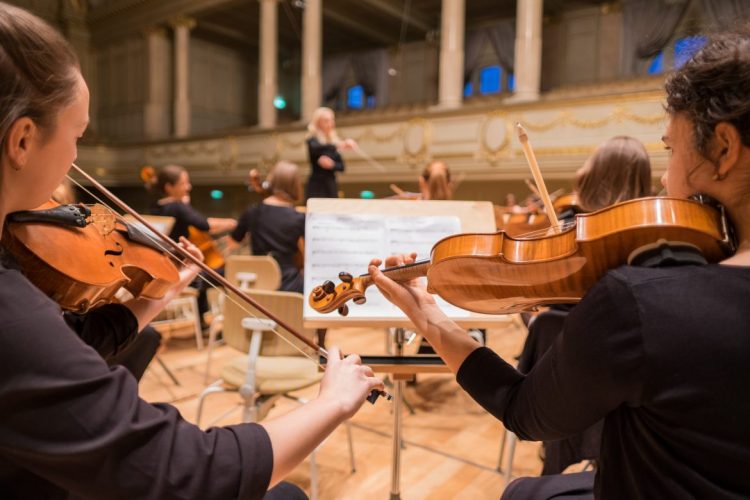
Source: Unsplash – Manuel Nägeli
Today, Hanoi Opera House is one of the symbols of Hanoi where both national and international performances and events happen such as musical displays, concerts, and art shows. As it is the most important performance venues in Hanoi, Hanoi Opera House is regarded as a “temple” of classical art.
The variety of artists on stage here ranges from famous Vietnamese singers namely Hong Nhung, My Linh or Thanh Lam to Vietnamese Orchestra and international instrumentalists.
Furthermore, Hanoi Opera House is valuable in terms of politics associated with the August Revolution and the early years of the Democratic Republic of Vietnam and the National Assembly’s meeting. Many important conferences and seminars are organized here.
Hanoi Opera House witnessed the social and cultural development of Hanoi and Vietnam during the French colonial time and also the domestic architectural development from the 19th to 20th century.
IV. The architecture of Hanoi Opera House
1. Functional Areas
The theatre is divided into 3 parts. At the entrance of the first floor is a grand lobby with a striking T-shaped staircase made of stone connecting to the second floor. The place is to welcome guests to the Theater. The ceiling and wall decorations take classical and antique motifs.
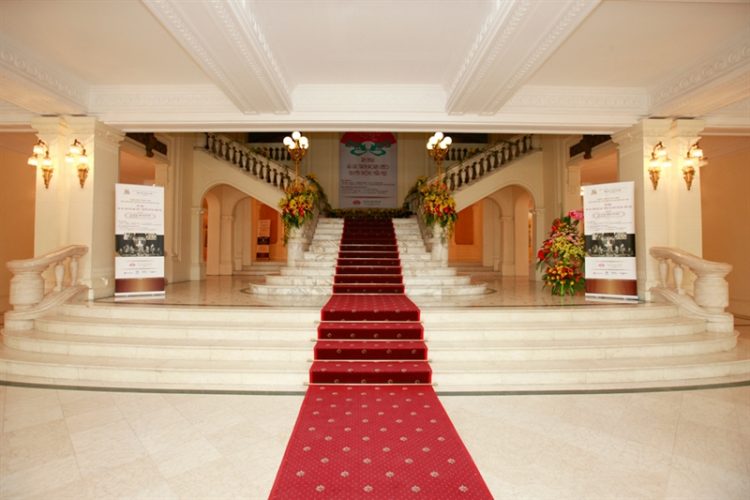
Source: Hanoi Opera House
The mirror room is located on the second floor combining 1 main chamber and 2 smaller rooms. The venue hosted important ceremonies of the government and welcome ceremonies of VIPs. The crystal chandeliers and furniture inside filled the room with the breath of the classic 19th-century French style.
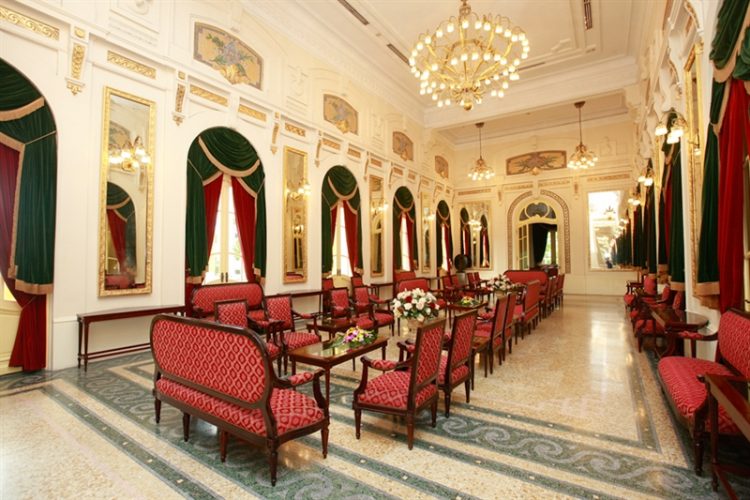
Source: Hanoi Opera House
Another area of Hanoi Opera House is an audience room where the performances are held with a large stage, 3 floors of seats and can serve a maximum of 598 seats at once. The room is decorated with lines of Corinthian pillars and embossed golden patterns. The interior of Hanoi Opera House is a harmony of light, color, and sound.
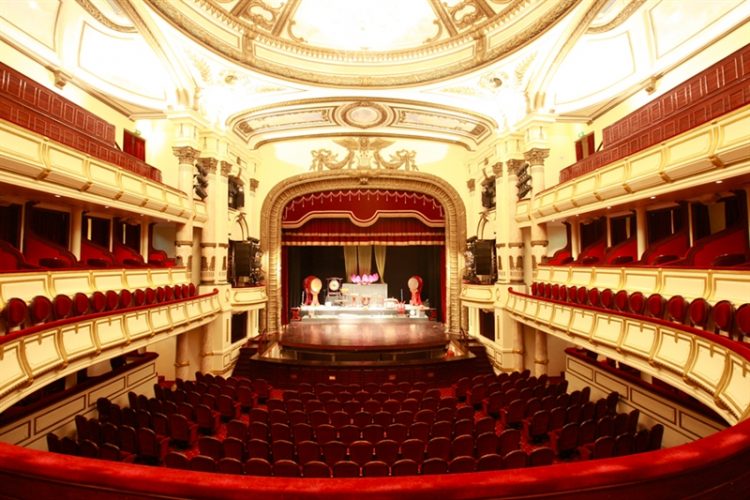
Source: Hanoi Opera House
Behind the stage is a management chamber with 18 makeup rooms for actors as well as offices, libraries and meeting rooms.
There is also a souvenir store exhibiting items across the long history of the theater that related to important events and majestic displays here. You can buy some small gifts to mark the experience.
2. Surrounding areas

Source: Flickr – Nam-ho Park
There are many spots for entertainment near the Hanoi Opera House. In the southwest of the place, you can take a look at the theatre’s garden and Ly Thai To Park or get your drink at Highlands Coffee. The front areas of the theatre connecting with the Hilton Hanoi Hotel are always crowded with couples to take wedding photos and also the group’s yearbook pictures.
The north of the August Revolution Square is a variety of shopping centers, Hanoi Press Club and New Zealand embassy. If you want to know more about the history of Vietnam, a short trip to the Vietnam Museum of Revolution and Vietnam History Museum in the far northeast is a great idea.
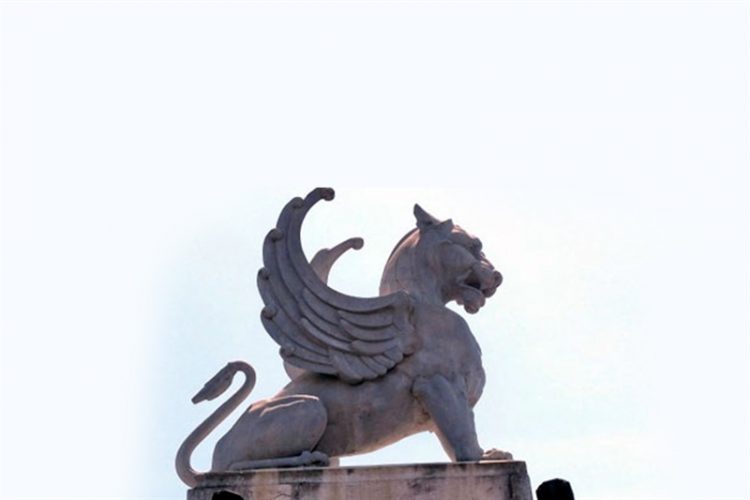
Source: Hanoi Opera House
V. Some rules & Tips
1. Rules
Those performances here are held on a large-scale and supervised with a list of strict regulations so the quality of the shows is ensured. For the audience, there are some points that you have to follow.
Firstly, visitors must wear formal clothes and avoid inappropriate behaviors. For example, you can’t smoke or bring food and chewing gum in the theatre.
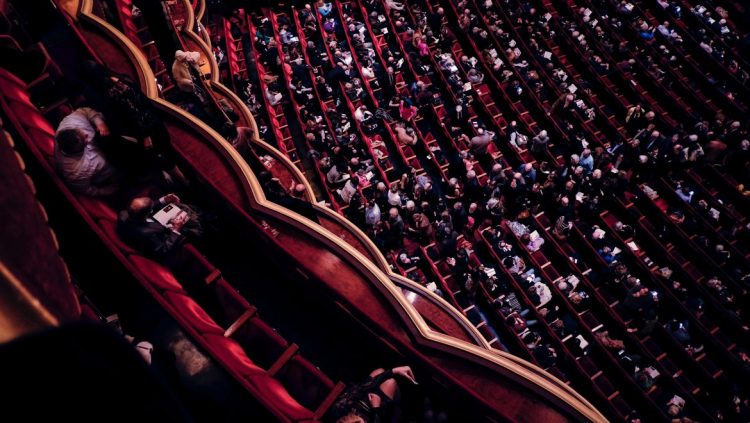
Source: Unsplash – Alev Takil
The theatre will be closed 15 minutes after the shows began so please be on time. To enjoy the show at the fullest, you have to keep silent and switch your phones to silent mode.
Filming or recording device is not allowed without the consent of the management officials.
Finally, children under 6 years old are not encouraged to come to the show.
2. How to book
The information for shows and tickets can be found at the Hanoi Opera House website. Hanoi Opera House can be crowded so booking e-tickets is highly recommended for your favorite seats and shows.
To know more about Hanoi Opera House, tourists can join a tour to explore every single corner of the theatre or even a virtual tour on the website instead.
3. How to get there
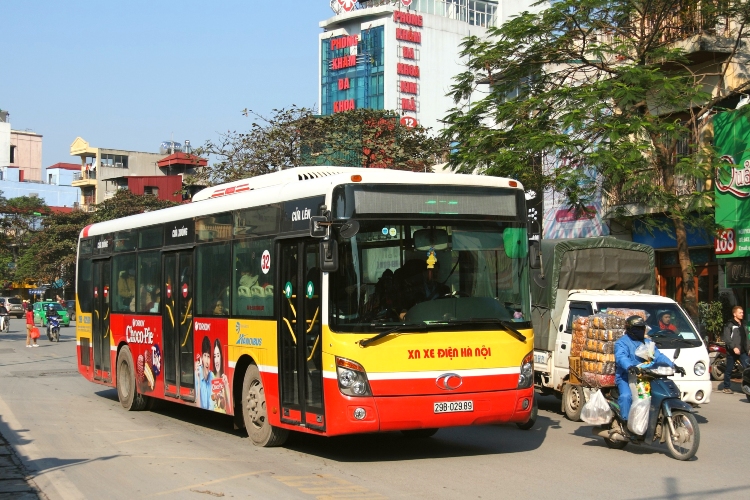
Source: WIki
The building stands out remarkably in the center of Hanoi, just a few steps away from Hoan Kiem Lake and Hanoi Old Quarter. It is so easy to find and you can get there by any kind of transportation.
You can take buses number 2 or 34 if you are looking for ones that stop near the theatre.
Contact Us
- Address: No.456 Lac Long Quan Street, Tay Ho District, Hanoi, Vietnam
- Phone: (+84) 4 3927 4120
- Email: sales@luxtraveldmc.com
- Hotline: +84-336-276-996
- Website: https://luxtraveldmc.com
